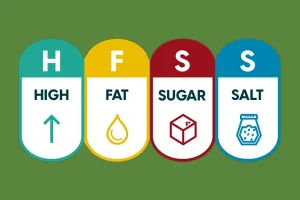A nutrition fact label is designed to reflect the most up-to-date federal recommendations regarding the nutrition facts of certain foods. Although this has become a staple of many mass-produced food products, the reasoning behind why these labels exist is often not discussed in depth. Interestingly enough, mandates around nutrition and food labels did not go into effect until the 1990s. Specifically, the FDA, through the Nutrition Labeling and Education Act, mandated that all food companies be required to make consistent claims and include a detailed, standardized nutrition facts panel on all products intended to be sold.
These labels exist to inform consumers about what they are eating and whether it aligns with their specific dietary requirements. The mandated label contents are routinely updated, making it easier and more accessible for consumers to understand the nutritional value of the food they buy and make healthier and more informed choices about their diets.
It can be challenging to ensure that you, as the manufacturer, remain compliant in a world of ever-changing guidelines, but it is pivotal to consumer health satisfaction and business success. Below is the legal aspect of displaying nutrition information on labels and what should be included on them.
Read more: Using Nutrition to help heal after Breast Cancer
It’s the Law to display Nutrition Information on Food Labels
It is the law in several countries to display nutrition information on food labels. Food labelling is required for most prepared foods, such as bread, cereals, canned and frozen foods, snacks, desserts, drinks, etc. Nutrition labelling for raw produce, including fruits and vegetables, as well as fish, is voluntary.
On an FDA-approved food label, certain nutrients must be included. These requirements are as follows:
- Calories
- Fat
- Trans
- Saturated
- Cholesterol
- Sodium
- Carbohydrates
- Fibre
- Sugars
- Added Sugars
- Protein
- Vitamin D
- Potassium
- Calcium
- Iron
Not only is it regulated by law that all these items be shown on the nutrition label, but it is also vital to the consumer as they attempt to become more informed about their food choices.
In addition to the mandatory nutrients, nutrition fact labels must also include servings per container, serving size, and household unit of measurement. Serving sizes are one of the most important measurements to take note of on the FDA-approved nutrition label. Serving size is a measurement of food that is appropriate for consumption as dictated by the nutrition guidelines.
Serving size per container – The total number of servings in the entire food package or container.
Serving size in weight – Details the portions of the serving Household equivalent (of serving size) – Refers to cup, tablespoon (tbsp), teaspoon (tsp), piece, slice, fraction (e.g., 1/4 pizza), ounce (oz), fluid ounce (fl oz), or other common household equipment used to package food products (e.g., jar, tray). (Source: FDA)
Further, serving size is determined by the category of food. This also helps consumers compare brands to see which option is healthier.
Another important component of nutrition labels is allergen information. Fortunately for consumers, allergen warnings on food labels are required by law. To protect consumers with any level of food allergies or sensitivities, the FDA developed regulations that require companies to create labels to list ingredients on all food and beverages.
For certain foods that were grown or manufactured in a place where they may have been exposed to a popular allergen (i.e. peanuts, nuts, soy), it must be clearly displayed on the label that potential cross-contamination occurred. Cross-contamination of allergens needed to be stated as a “may contain” to cover all bases. This is not only to keep consumers safe but to legally protect food manufacturers should an incident occur.
Read more: FDA Deadline: Meeting Requirements by November 7th, 2023

It’s important to also tell people what they are consuming
In some cases, mostly small, family-owned businesses, food and nutrition labels aren’t required. This is likely due to the fact that the majority of items served at these restaurants are often homemade, unique to that specific establishment, and not mass-produced. Additionally, there are numerous laws that address the size and type of items that must be included. For example, in Canada, chains with more than 20 locations have to provide nutrition labels on all food items. However, just because these labels are not required across the board doesn’t mean the importance of sharing nutrition information should be diminished. It’s important in these cases to always keep the consumer in mind, specifically those who have dietary needs or are simply interested in what they are consuming on a regular basis.
Consumers who visit fast-food restaurants also dine in smaller restaurants like those mentioned, and it’s vital that they receive the same consistent information regardless of where they purchase food.
Read more: FDA Food Product Labelling and Packaging 101

How do you know what is required on a Nutrition Fact Label?
Creating an FDA-approved nutrition fact label will not only help your company stay compliant with the most current guidelines but will also instill confidence in your customers that you are detail-oriented in your business. MenuSano helps you consistently achieve these standards, which ultimately results in better business outcomes.
Manufacturers’ responsibilities are constantly evolving with the introduction of new ingredients, trends, and regulations for preparing food for consumers. That said, it is more important than ever before that food service providers remain compliant and provide accurate nutrition information.
There are websites in place for each country that provide location-specific details on what must be included on a nutrition label. For instance, websites exist for Canadian, United States, and United Kingdom regulations. On each of these sites is a plethora of information valuable for food manufacturers to ensure they are staying compliant and operating in accordance with the latest regulations. However, so much information to sift through can be a daunting task, and it can be easy to miss small details. MenuSano is a solution that can help solve this problem.
MenuSano nutritional software is an online nutrition calculator that provides an affordable, flexible, user-friendly solution for your business to calculate the nutritional content of all of your current and future products. It was also designed to be compliant with industry legislators’ standards and is continuously monitored and updated to maintain compliance.
Start a free trial today and simplify your Nutrition Labelling needs!



















